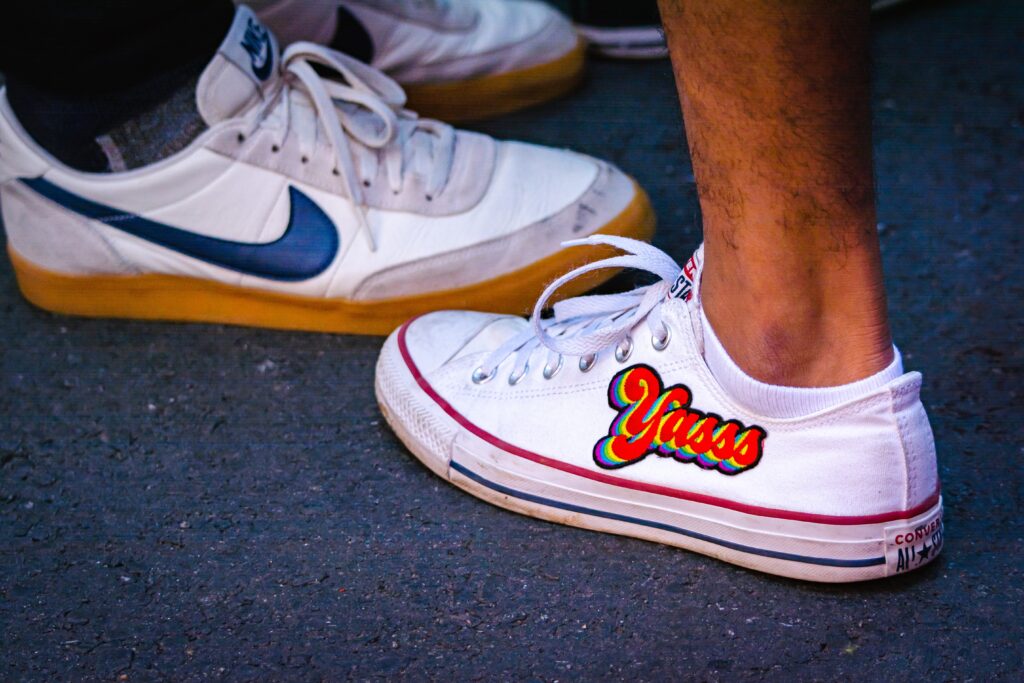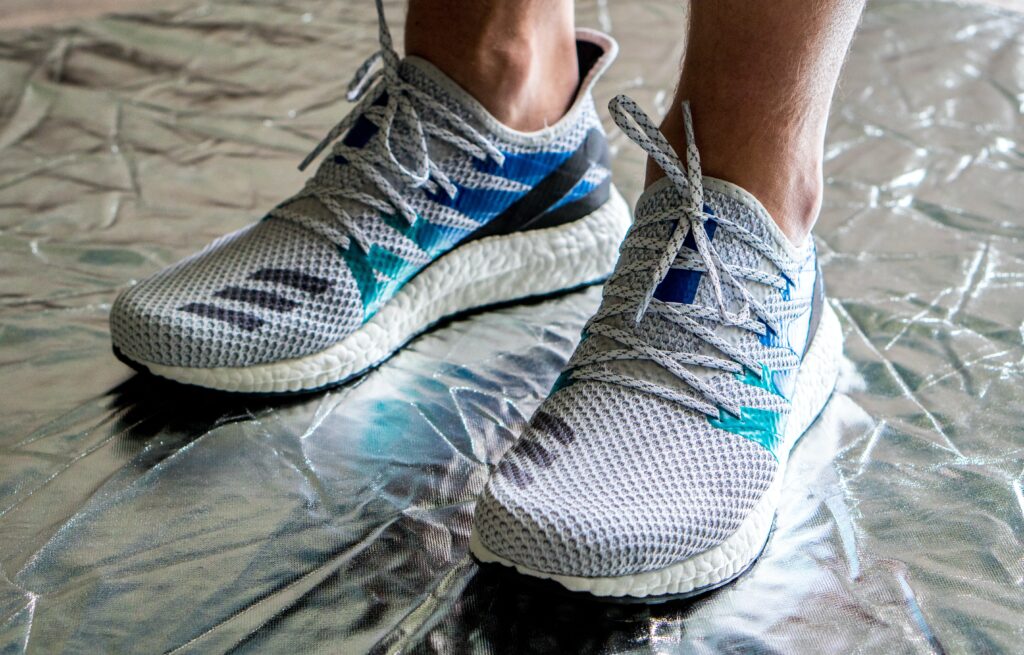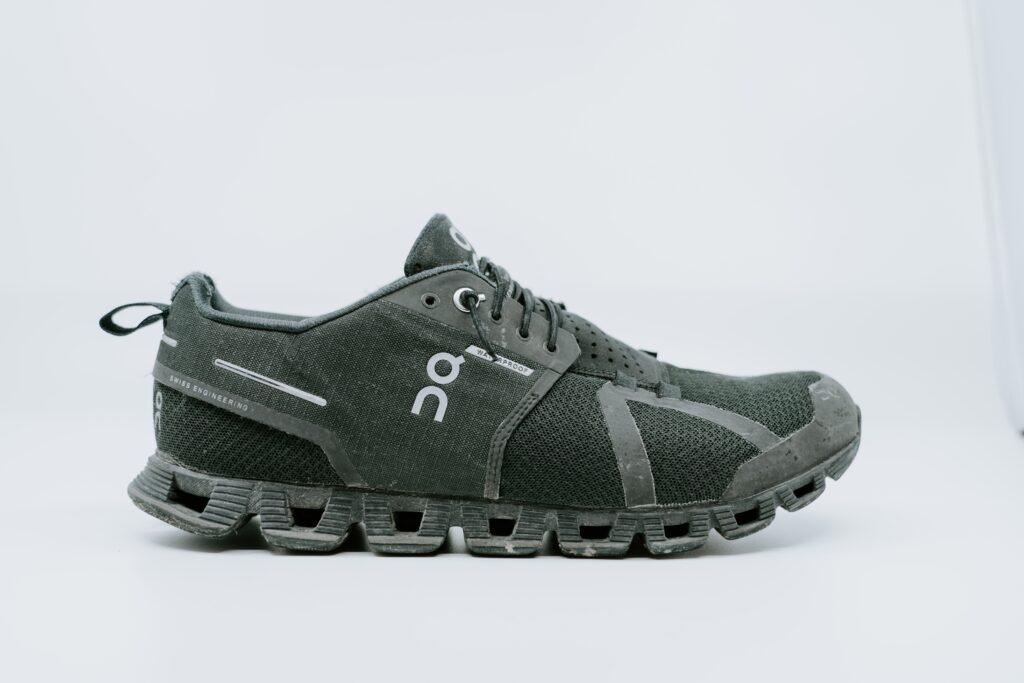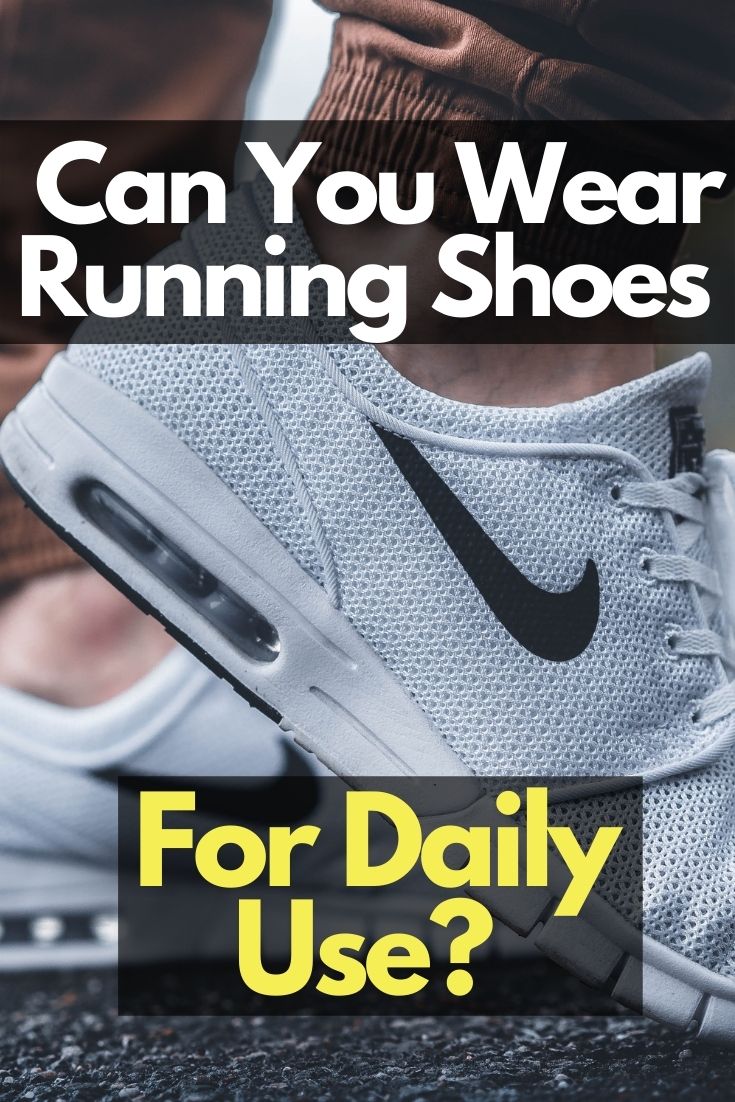We call them running shoes, while others know them as sneaks or sneakers. The name doesn’t matter that much when we understand what we are referring to and the purpose of the shoes.
If you buy something using links in my stories, I may earn a commission. This helps support this website. Learn More.
The purpose of running shoes is to get you to run. Their design is very specific, with emphasis on moving forward.
Tennis shoes are made for tennis players. As you play tennis, you need to move forward, side to side and back.
There are other varieties of footwear made for precise purposes, meaning that they are not suitable for carrying out other tasks that you may want to put them up to.
Your golf shoes are a good example. They are great when you are indulging in a classic game of holes 1 to 18, but you won’t want to wear them elsewhere. They might even be prohibited in other places that you try to wear them.
Can you wear your running shoes for daily use?

The answer to this question depends on your opinion of what you should do. After all, you own the shoes. The same case applies to tennis shoes. You can run in them if you desire.
But should you do that?
Consider using shoes for their specific purposes. If you need more mileage out of your running shoes, wear them only when you are going for a run. You also don’t want to risk getting an injury in the wrong shoes. If you are wearing your running shoes while playing tennis, the injuries from the sudden back and forth movements might be disastrous.
Stick to using your running shoes for running purposes.
There is more to running shoes than asking whether you can wear them as you conduct your daily errands. It would be good to understand what they are and the different types they come in. This complicates the answer to the question addressed in this post.
Common types of running shoes
The question of whether running shoes can be worn each single day becomes tough to answer when we begin considering the many different types of running shoes that are in production nowadays. As if that is not enough, new designs keep coming up every now and then.
Running shoes are made for various purposes to address different needs.
To understand what running shoes are, we will highlight five common types and explain each briefly. You may notice our repeated use of the phrase ‘pronation.’
What is pronation?
When we talk about pronation, we are describing the action that our feet take when we are moving. Typically, when the foot makes contact with the surface, it moves inwardly. This applies to both running and walking.
Pronation occurs in three main ways.
Normal pronation describes the action of the foot rolling evenly.
Over-pronation refers to the excessive rolling of the foot.
Under-pronation describes feet that experience little to no inward rolling motion.
The five types of running shoes
1. Stability running shoes
These shoes are specifically made for runners who have normal arches. They are designed to provide excellent support for your foot arches and your ankles too.
2. Motion control running shoes
Do you think your feet have over-pronation? If so, these are the best running shoes for you. They are specifically made with enhancements to provide extra support in the bridge and midsole areas.
3. Cushion running shoes
You may have probably figured out the purpose of cushion running shoes. Their design supports people who have minimal pronation. The additional padding mimics the actions of a shock absorber. This cushioning protects areas such as your heel.
4. Lightweight running shoes

Lightweight running shoes are specifically designed to aid runners who mainly engage in a lot of racing and speed running activities. The amount of cushioning is limited, meaning that their weight is on the lower side.
Nonetheless, this implies that your feet receive less shock absorption and support.
5. Trail running shoes
Do you enjoy runs on rough surfaces and not smooth ones like sidewalks and tracks?
If so, these are the right shoes for you. Trail running shoes are like off-road vehicles. You can run just about anywhere with them.
We are talking about country trails, dirt tracks and locations where you are likely to encounter rocks of varying size, mud and steep inclines. You need these to overcome the challenges that are brought about by tough off-road conditions.
What running shoes should you not wear for daily use?
Now that we know the different types of running shoes, answering this question presents less ambiguity.
Lightweight running shoes
Among the five designs of running shoes that we have discussed above, the lightweight running shoe is one particular type that people are advised not to view as a pair that they can wear every other day.
In the past, most shoes under this category had spikes for extra grip. They are no longer made with spikes, but their primary goal is still racing or running on well-constructed tracks.
The chief objective of lightweight running shoes is speed. This is why they weigh less than all other running shoes. The reduction in weight can be attributed to the use of cushioning and padding in the construction of the shoe. This is an amazing feature that makes you feel like you are walking on air, but it presents a certain challenge. You won’t be as comfortable or as protected as you think.
All other types of footwear that incorporate the lightweight design are not suitable for daily use or for wearing for long hours.
Trail running shoes
We recommend that you wear your trail running shoes for their specific purpose only. This recommendation is based on reasons that are completely different from those of the lightweight shoe.
Trail running shoes are equipped with enhanced grip to provide adequate footing whenever you encounter slippery or wet surfaces during your run. Such surfaces can be treacherous, particularly if they are on steep trails.
If your grip is compromised while you are running on a trail, you won’t be able to fully enjoy your exercise because you will be distracted by the possibility of slipping and falling. Running on such surfaces with shoes that have an inadequate grip can be dangerous.
One sure way of compromising the grip on your trail running shoes is using them daily. You are most likely to walk on sidewalks all day, most of which are made of concrete. As you do, the lugs and other bits that make up the grip are wearing out slowly but surely. This reduces the overall grip.
You will want to wear your trail running shoes only when you need to run on a trail. This ensures that the shoe will last longer.
Are there running shoes that can be worn every day?

Stability, motion control and cushion running shoes can be worn every day. If they are your size, and are comfortable, there is no specific reason why you can’t use them daily.
However, there are downsides to wearing your running shoes on a daily basis. The more miles you cover, the quicker your shoes will wear out. Typically, the insole and grip wear out faster than other components.
When you wear your running shoes daily, you will need to keep replacing them every now and then. Considering that running shoes cost quite a small fortune, you might want to get ordinary trainers if you want a pair of shoes that you can wear all day, every day.
Getting a pair of trainers will help you preserve your running shoes and save you the cost of repeatedly getting new running shoes.
We recommend that you use your running shoes for their intended purpose…running!
What is the importance of using specific shoes for different sports?
- To prevent injuries
Would you wear your Jordans to go for a run? Certainly not. Then why would you wear your running shoes to go play a basketball game?
Different athletic shoes are designed and manufactured with keen attention on preventing injuries. The specific sport they are made for determines how they are structured. Running shoes are equipped to minimize the risk of getting injured while running. It is not good to use them for other purposes.
- Forming healthy habits
When you wear your running shoes, you signal your mind that your probability of going for a run is high. If you put your gym shoes, you know that you have to get some form of workout before proceeding with any other activity.
- Saving money in the long run

Your running shoes will generally push you for not more than 500 miles. If most of these miles are accumulated while you are walking or performing other exercises, you will not have utilized the full capacity of your running shoes.
Besides, the more you use them, the sooner you have to replace them. Good running shoes don’t come at a cheap price. By using shoes for their specific purpose, you save up on the cost of having to replace those that cost a small fortune.

